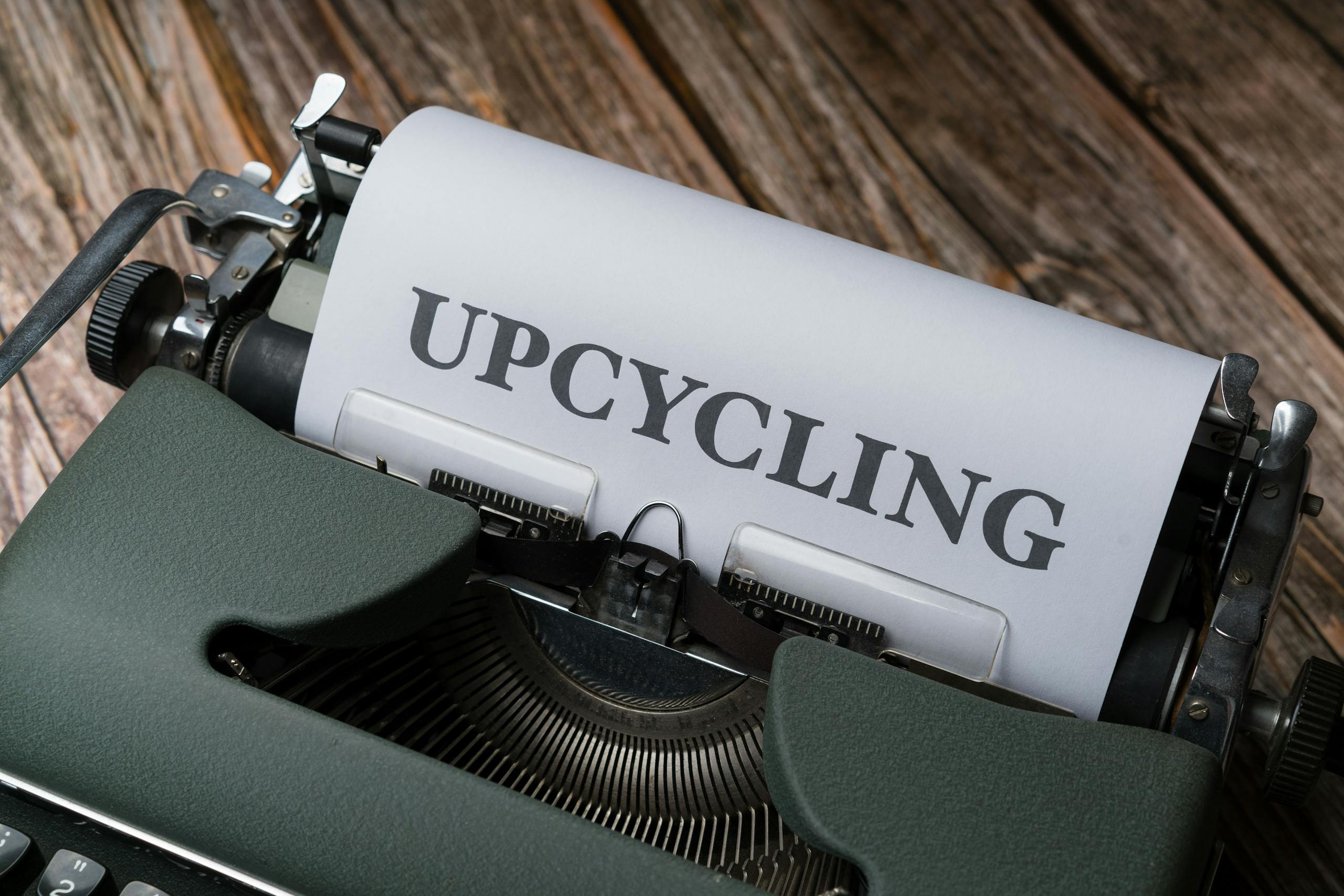Repurposing And Recycling: Saving Money And The Planet
There are some affiliate links below, but they are all products I highly recommend. For more info, view my disclosure here.
Are you looking for ways to save money and help the planet? Look no further than repurposing and recycling!
We will show you how to find hidden gems in your home that can be transformed into something new and exciting. With a little creativity, you can upcycle old furniture and decor to give them a fresh and modern look.
Plus, we’ll share creative ways to reuse packaging materials, saving you money and reducing waste.
Don’t forget about your wardrobe – repurposing clothing and accessories is not only a great way to save money, but also to stay on top of the latest fashion trends.
And when it comes to electronics and e-waste, recycling is a must. We’ll show you how to properly dispose of old devices while protecting the environment.
We’ll talk about reducing food waste through composting and collaborating with local recycling centers and organizations.
By repurposing and recycling, you can make a positive impact on both your wallet and the planet. Let’s get started!
Finding Hidden Gems in Your Home
You’ll be amazed at the hidden gems you can find in your home when you start repurposing and recycling. It’s like going on a treasure hunt without ever leaving your house.
Take a look in your attic or basement, and you might find old furniture pieces that can be given a new life with a fresh coat of paint or some creative upholstery. That old wooden chair that’s been collecting dust could become a stylish accent piece in your living room.
Don’t forget to search through your closets and drawers too. You might stumble upon clothes that can be transformed into trendy new outfits with a little bit of sewing or alteration. That old pair of jeans that no longer fits could be turned into a fashionable denim skirt. And those worn-out t-shirts could be cut up and transformed into a colorful patchwork blanket.
Even your kitchen can be a source of hidden gems. Take a look at your collection of glass jars and bottles. With some paint or twine, they can become decorative vases or storage containers. And those old wine corks can be repurposed into a unique bulletin board or even a stylish necklace.
Start exploring your home and look for those hidden gems. Not only will you save money by repurposing and recycling, but you’ll also be doing your part to help the planet by reducing waste. It’s a win-win situation!
Upcycling Furniture and Decor
Transforming old furniture and decor into unique pieces not only adds character to your home, but also reduces waste and promotes sustainability. Instead of throwing away that old chair or table, why not give it a second life by upcycling it?
Upcycling is the process of repurposing or modifying an item to create something new and useful.
One of the easiest ways to upcycle furniture is by giving it a fresh coat of paint. A dull and outdated piece can be completely transformed with a vibrant color or a distressed finish. You can also add new hardware, such as knobs or handles, to give it a modern touch.
Another popular upcycling idea is to turn old doors into unique headboards or tables. By simply adding some legs and a coat of varnish, you can create a stunning and one-of-a-kind piece.
When it comes to decor, the possibilities are endless. Old mason jars can be turned into stylish vases or candle holders. Empty wine bottles can become chic centerpieces by adding some paint or twine. Even old picture frames can be repurposed as jewelry organizers or chalkboards.
By upcycling these items, you not only save money but also contribute to a more sustainable lifestyle.
Before you toss out that old furniture or decor, think about how you can give it new life. With a little creativity and some basic DIY skills, you can transform these items into unique and beautiful pieces that will make your home truly special.
Creative Ways to Reuse Packaging Materials
Get ready to discover some fun and imaginative ways to give a new purpose to those packaging materials you have lying around. Instead of throwing them away, why not get creative and repurpose them into something useful?
One idea is to use cardboard boxes to create storage solutions. Cut off the top flaps and reinforce the edges with duct tape, then stack them up to make a DIY shelf or organizer for your home office or garage.
Another option is to transform bubble wrap into a stress-relieving sensory toy. Simply wrap it around a small object, secure it with tape, and enjoy popping the bubbles whenever you need to relax.
If you have a collection of plastic air pillows, consider turning them into a comfy cushion for your pet’s bed. Just gather them up, sew them into a pillowcase, and voila! Your furry friend will have a soft and cozy spot to nap.
Don’t forget about those Styrofoam packing peanuts. Use them as a base for floral arrangements or as lightweight fillers for bean bag chairs. By repurposing packaging materials, not only are you saving money, but you’re also reducing waste and giving new life to items that would’ve otherwise ended up in a landfill.
Repurposing Clothing and Accessories
Instead of discarding old clothing and accessories, consider giving them a new lease on life by repurposing them in creative and innovative ways. Repurposing your old wardrobe not only helps you save money, but it also reduces waste and contributes to a more sustainable lifestyle.
One great way to repurpose old clothing is by turning them into new accessories. For example, you can transform an old t-shirt into a trendy tote bag, or use the fabric from an old pair of jeans to create a stylish headband. These DIY projects not only allow you to express your creativity, but they also give your old clothes a new purpose and extend their lifespan.
Another way to repurpose clothing is by upcycling them into new clothing items. You can easily transform a long-sleeve shirt into a trendy crop top or a pair of jeans into stylish shorts. By repurposing your old clothes, you can stay in fashion without breaking the bank, while also reducing the demand for new clothing and the environmental impact associated with its production.
Don’t forget about accessories! Old belts can be turned into unique and fashionable bracelets, while scarves can be transformed into headbands or used to decorate bags. The possibilities are endless when it comes to repurposing clothing and accessories, so let your imagination run wild!
Repurposing old clothing and accessories is a great way to save money and reduce waste. By giving your old items a new purpose, you not only contribute to a more sustainable lifestyle but also get to enjoy the satisfaction of creating something new and unique. Before you toss out those old clothes, think about how you can repurpose them and give them a second chance to shine.
Recycling Electronics and E-Waste
Electronics and e-waste may seem insignificant, but they hold the key to unlocking a greener future. It’s easy to accumulate old phones, laptops, and other gadgets without realizing the negative impact they can have on the environment. That’s where recycling comes in.
By properly disposing of your electronic waste, you can help reduce pollution and conserve valuable resources. Recycling electronics is an important step in the fight against e-waste. Many electronic devices contain hazardous materials like lead, mercury, and cadmium that can leak into the soil and water if not disposed of properly. By recycling, these harmful substances can be safely extracted and prevented from causing further damage.
But recycling doesn’t just benefit the environment; it can also save you money. Many electronic manufacturers offer take-back programs or recycling incentives, allowing you to trade in your old devices for a discount on a new one. This not only helps you save money on your next purchase but also ensures that your old electronics are recycled responsibly.
In addition to recycling, consider repurposing or donating your old electronics. Just because you no longer find a device useful doesn’t mean someone else won’t. Many organizations accept old electronics for refurbishment or donation to those in need. By giving your old gadgets a second life, you’re not only reducing waste but also helping others who may not have access to technology.
The next time you upgrade your phone or replace your laptop, remember the importance of recycling and repurposing electronics. By doing so, you’ll not only save money but also contribute to a cleaner and greener future.
Reducing Food Waste through Composting
When you toss your food scraps into a compost bin, you’ll witness the transformation from leftovers to nutrient-rich soil, nourishing the earth and supporting new growth. Composting is a simple and effective way to reduce food waste and help the environment.
Instead of throwing away your food scraps, you can turn them into a valuable resource. Composting not only diverts waste from landfills, but it also reduces greenhouse gas emissions.
Composting is an easy process that anyone can do. All you need is a designated compost bin or pile, and a mix of green and brown materials. Green materials include fruit and vegetable scraps, coffee grounds, and grass clippings. Brown materials include leaves, twigs, and shredded paper.
Simply layer these materials in your bin and let nature do the rest. Over time, microorganisms and worms break down the organic matter, turning it into nutrient-rich compost.
By composting, you’re not only reducing waste, but you’re also creating a natural fertilizer for your garden. Compost enriches the soil, improving its structure and ability to retain moisture. This means healthier plants and less need for chemical fertilizers. Composting can help reduce the need for water, as it improves soil’s water-holding capacity.
Instead of throwing your food scraps in the trash, consider composting them. It’s a simple and rewarding way to reduce waste, save money on fertilizers, and support a healthier environment. Give it a try and see the amazing transformation from kitchen scraps to nourishing soil.
Collaborating with Local Recycling Centers and Organizations
To maximize your impact, consider teaming up with local recycling centers and organizations to create a powerful network of waste reduction and resource conservation. By collaborating with these entities, you can significantly increase the amount of waste that’s repurposed and recycled, saving both money and the planet.
When you work with local recycling centers, you can ensure that the materials you dispose of are properly sorted and processed. This reduces the amount of waste that ends up in landfills and allows for valuable resources to be extracted and reused. By partnering with these centers, you can also gain access to their expertise and knowledge, learning about new recycling techniques and technologies that can further enhance your waste reduction efforts.
Joining forces with local organizations that focus on recycling and sustainability can amplify your impact. These organizations often have established networks and connections within the community, allowing you to reach a larger audience and educate them about the importance of recycling and repurposing. By working together, you can organize events, workshops, and campaigns that raise awareness and encourage individuals and businesses to adopt more eco-friendly practices.
Collaborating with local recycling centers and organizations is a crucial step in creating a powerful network of waste reduction and resource conservation. Together, we can make a significant difference in saving money and protecting our planet for future generations.






